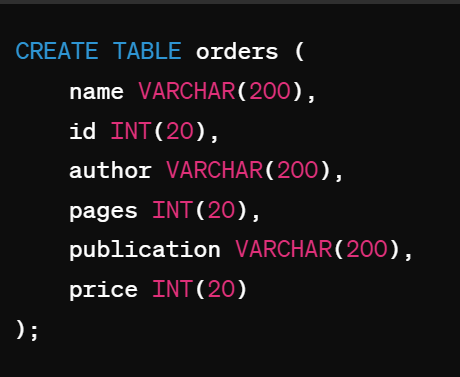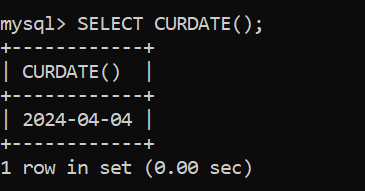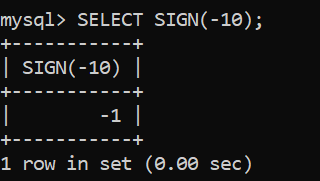Q.1. Create Table for order.
a. Add fields: name, id, author, pages, publication,
and price.
c. Select id, name and price from
order table.
To truncate the
orders table, you can use the following SQL command:This command will remove all rows from the
orders table while keeping the table structure intact. Make sure to use it with caution as it deletes all data in the table.e. Drop the table.
To drop the
orders table, you can use the following SQL command:This command will completely remove the
orders table from the database, including its structure and all associated data. Use it with caution as it cannot be undone.Q2 QUESTION
i. Find total number of students in stud table.
a) Display the employee name along with their
salay.
a. Viewing all databases
SYNTAX:
CREATE TABLE table_name (
column1 datatype constraints,
column2 datatype constraints,
...
);
SYNTAX:
INSERT INTO table_name (column1, column2, ...)
VALUES (value1, value2, ...);
SYNTAX :
UPDATE table_name
SET column1 = value1, column2 = value2, ...
WHERE condition;
In this example:
- Each
UPDATEstatement updates theagecolumn for a specific customer identified by theircustomer_id. - You would repeat these
UPDATEstatements for different records or different columns as needed to update at least 5 records in thecustomerstable. Adjust the condition (WHEREclause) and the value being updated according to your specific requirements.
SYNTAX:
DELETE FROM table_name
WHERE condition;
SYNTAX:
ALTER TABLE table_name
ADD COLUMN new_column datatype constraints;
SYNTAX :
ALTER TABLE old_table_name
RENAME TO new_table_name;
a) ABS ( ) b) SQRT( ) c) current date and time
d) ROUND ( ) f) Current date f) MOD ( )
g) SIGN () h) POWER( )
a) ABS(): Returns the absolute value of a number.
b) SQRT(): Returns the square root of a number
c) Current Date and Time: Returns the current date and time.
d) ROUND(): Rounds a number to a specified number of decimal places.
e) Current Date: Returns the current date.
f) MOD(): Returns the remainder of a division operation.
g) SIGN(): Returns the sign of a number (-1 for negative, 0 for zero, 1 for positive).
h) POWER(): Raises a number to a specified power.
6. Create a table Student with following columns.
(10 Records)
(Rollno primary key, Fname, Lname, Course_name,
Email_id)
a) Display the total number of student enrolled in
BAF course.
b) Display the student names whose name start
with letter ‘A’.
c) Display students first name and last name.
d) Display student details whose rollno is 208.
e) Display the student name who enrolled in the
course ‘BCom’.
7. Perform the following aggregate function:
a)AVG ( ) b) MIN ( ) c) MAX ( ) d)
SUM( ) e) COUNT()
let's perform each aggregate function on the
Student table:a) AVG(): Calculate the average of a numeric column:
b) MIN(): Retrieve the minimum value of a column:
c) MAX(): Retrieve the maximum value of a column.
d) SUM(): Calculate the sum of values in a numeric column:
e) COUNT(): Count the number of rows in a table:
8. Views: Creating View , Selecting View, Drop
View
In SQL, a view is a virtual table that is based on the result set of a SELECT statement. It behaves like a table in that you can query data from it using SELECT statements, but unlike a table, it does not store any data itself. Instead, it is a saved query that is stored in the database and can be referenced and used like a table.
Creating a View:















































